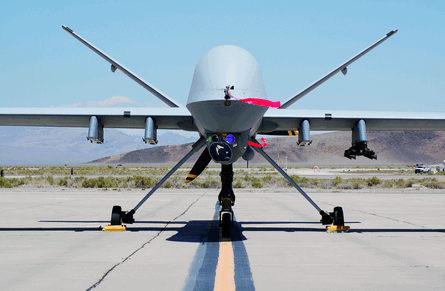The US Air Force plans to a field a new sensor pod in 2010 that is expected to revolutionise tactical-level intelligence, surveillance and reconnaissance (ISR).
The Sierra Nevada sensor, which the USAF has officially nicknamed the "Gorgon Stare", will initially provide a wide-area, persistent surveillance system for its General Atomics MQ-9 Reaper unmanned air vehicles. But its plans for the sensor will see it become the new standard for the tactical ISR mission, and proliferate on to several other unmanned and manned platforms operated by every service.
The Gorgon Stare is intended to "become platform agnostic and feed into a common system where it could go on any aircraft", says Brig Gen Blair Hansen, the USAF's director of ISR capabilities. "It is part of a common theme of integration and compatibility and is where we're going in the future."
Hansen acknowledges that the mission of tactical ISR has become increasingly fragmented, with varying sensors deployed aboard a wide mix of manned and unmanned aircraft.
 |
|---|
© USAF |
Airborne systems that feature wide-area coverage, real-time playback and direct links to troops on the ground have become popular in Afghanistan and Iraq. The US Army's deployment of the Shorts C-23 Constant Hawk and the US Marine Corps' manned Angel Fire platform are examples of the demand for wide-area, persistent surveillance coverage.
The USAF's original plan was to wait to deploy the Gorgon Stare on the MQ-9 in 2010, but that plan was undone after Secretary of Defense Bob Gates publicly admonished the service to be more responsive to immediate needs on the battlefield.
Last May, USAF leaders approved Project Liberty, a plan to rapidly acquire 37 Beechcraft MC-12Ws - modified King Air 350/350ERs. The first aircraft equipped with an L-3 Wescam MX-15 sensor is expected to be deployed in April, less than one year after the original plan was approved. The MC-12W also will carry an undisclosed signals intelligence payload.
Ultimately, the USAF wants the Gorgon Stare system to supersede the various manned and unmanned sensor pods now performing the wide-area, persistent surveillance mission.
Hansen notes that programmes such as Angel Fire, while helpful, are closed-loop systems that require dedicated logistics and training to support. Gorgon Stare is instead designed to operate from any platform and integrate into the Distributed Common Ground System, which is used by intelligence operators of all services to analyse imagery.
Source: Flight International























